Uw bericht is verzonden.
We verwerken je aanvraag en nemen zo snel mogelijk contact met je op.
Het formulier is succesvol verzonden.
Meer informatie vindt u in uw mailbox.
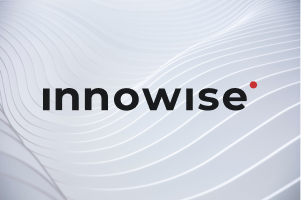
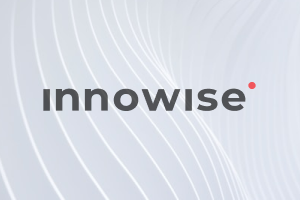

Heb je wel eens geworsteld met softwareprojecten die voortdurend over het budget heen gingen, deadlines misten of niet voldeden aan de verwachtingen van gebruikers? Misschien had je team moeite met het definiëren van die vereisten, of waren de verantwoordelijkheden versnipperd, bleef de communicatie achter en stagneerde de voortgang. Je bent niet de enige - deze uitdagingen komen vaak voor, maar er is een beproefde manier om ze aan te pakken.
Dat is precies wat de SDLC (levenscyclus softwareontwikkeling) is gebouwd om op te lossen. Het biedt een gestructureerde, herhaalbare aanpak voor het plannen, bouwen en leveren van software die echt werkt.
In dit artikel leg ik uit wat SDLC vandaag de dag echt betekent, hoe het je helpt om je proces vanaf dag één te verduidelijken en hoe het je kan helpen om consistent software sneller en met veel minder verrassingen op te leveren.
De Software Development Life Cycle (SDLC) is een gestructureerd pad voor uw softwareprojecten, dat complexe processen opsplitst in beheersbare stappen - van het eerste concept tot de implementatie en voortdurende ondersteuning. Elke fase omschrijft specifieke taken, wijst duidelijke rollen toe en stelt tastbare resultaten op, zodat alle betrokkenen op één lijn zitten en weten wat hun taak is.
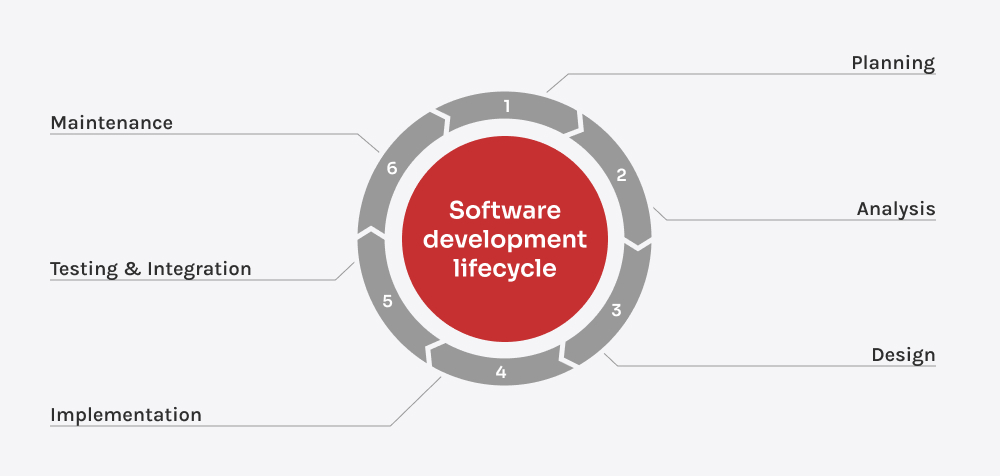
Software komt niet in een rechte lijn tot leven. Het ontwikkelt zich door een reeks opzettelijke SDLC-fasen. De SDLC begeleidt die reis en helpt teams om op één lijn te blijven, risico's te beperken en producten te ontwikkelen die daadwerkelijk voldoen aan de behoeften van gebruikers en bedrijven.
Dit is de "waarom doen we dit" fase. Hier definiëren de teams het doel, de reikwijdte, de doelstellingen, het budget en de opleveringsdatum van het project. Bedrijfsanalisten en projectmanagers werken nauw samen met belanghebbenden om pijnpunten te identificeren en een strategie op hoog niveau uit te stippelen. Wat wordt hier gedaan: interviews met belanghebbenden, haalbaarheidsstudies, risicobeoordelingen en resourceplanning.
Zodra het project is goedgekeurd, gaat het team definiëren wat de software eigenlijk moet doen. De eerste stap is het verzamelen van input van alle belanghebbenden om zowel de bedrijfsbehoeften als de gebruikersverwachtingen te begrijpen. Dit leidt tot de documentatie van functionele vereisten (wat gebruikers moeten kunnen doen) en technische vereisten (hoe het systeem zich onder de motorkap moet gedragen). Als laatste stap beoordeelt en verfijnt het team de vereisten voordat het verder gaat.
In de ontwerpfase zet het team de ruwe vereisten om in een praktische blauwdruk voor het bouwen van de software. Het begint met een ontwerp op hoog niveau, waarbij de architectuur van het systeem, de belangrijkste modules, de gegevensstroom en de interactie tussen de verschillende onderdelen in kaart worden gebracht. Van daaruit gaan ze dieper in op het ontwerp op laag niveau, waarbij ze de logica, de structuur en het gedrag van elk onderdeel detailleren, inclusief de lay-out van de database en de belangrijkste algoritmen. Ontwerpers maken vaak wireframes of klikbare prototypes om het gebruikerspad te verkennen en bruikbaarheidsproblemen in een vroeg stadium op te sporen. Deze fase neemt giswerk weg voor ontwikkelaars en helpt kostbaar herwerk te voorkomen door technische uitdagingen aan het licht te brengen voordat er code wordt geschreven.
In de ontwikkelingsfase begint de software vorm te krijgen wanneer ontwikkelaars ontwerpen omzetten in werkende code. Ze bouwen de applicatie stukje bij beetje, vaak in korte, gerichte cycli die ruimte bieden voor veelvuldig testen, feedback en aanpassingen. Ontwikkelaars schrijven niet zomaar code - ze maken weloverwogen architecturale keuzes en structureren functies voor onderhoudbaarheid op lange termijn. Tijdens het hele proces blijven ontwikkelaars nauw met elkaar samenwerken, ze beoordelen elkaars werk, verfijnen de logica en lossen samen problemen op om het product in lijn te houden met zowel de technische visie als de bedrijfsdoelen.
Hoe gepolijst de codebase ook is, ongeteste software is een tikkende tijdbom. In de testfase wordt het product getest voordat het de gebruikers bereikt. Het begint meestal met systeemtests, waarbij wordt gecontroleerd of de hele applicatie als een eenheid werkt. Daarna komen handmatige tests, waarbij QA-technici het gebruik in de echte wereld en edge cases simuleren. Tot slot komen er geautomatiseerde tests om repetitieve taken op schaal uit te voeren, zodat de stabiliteit na elke nieuwe implementatie gegarandeerd is.
Deployment is waar de software het lab verlaat en in de echte wereld terechtkomt. Het team rolt het product uit naar gebruikers - in één grote lancering of geleidelijk via gefaseerde releases - terwijl het nauwlettend het gedrag in de live-omgeving volgt. Deze fase omvat het configureren van de infrastructuur, het opzetten van geautomatiseerde deployment pipelines en het voorbereiden van rollbackstrategieën voor het geval er iets misgaat. Ontwikkelaars, DevOps-engineers en QA werken vaak zij aan zij om het releaseproces soepel te laten verlopen, last-minute problemen op te lossen en ervoor te zorgen dat alles vanaf de eerste dag precies werkt zoals bedoeld.
Zodra de software live is, begint de echte test. Het team controleert de prestaties, reageert op feedback van gebruikers en pakt bugs of kwetsbaarheden aan die onder echte omstandigheden aan het licht komen. Net zo belangrijk is dat de supportteams in de frontlinie werken en inzichten van gebruikers verzamelen, terwijl de ontwikkelaars zich bezighouden met technische aanpassingen en langetermijnverbeteringen. De software wordt een levend product - voortdurend verfijnd om relevant en betrouwbaar te blijven.
Hoe je software bouwt, is net zo belangrijk als wat je ontwikkelt. SDLC-modellen geven structuur aan de chaos en helpen teams om te navigeren langs verschuivende doelen, strakke deadlines en het constante getouwtrek tussen kwaliteit en snelheid.
Het Watervalmodel is een lineaire en sequentiële aanpak. Het bestaat uit verschillende fasen: Vereisten, Ontwerp, Implementatie, Testen, Implementatie en Onderhoud. Elke fase moet worden afgerond voordat naar de volgende wordt gegaan. Er is geen weg terug als een fase is voltooid. Dit model werkt goed als de vereisten goed gedefinieerd zijn en waarschijnlijk niet zullen veranderen.
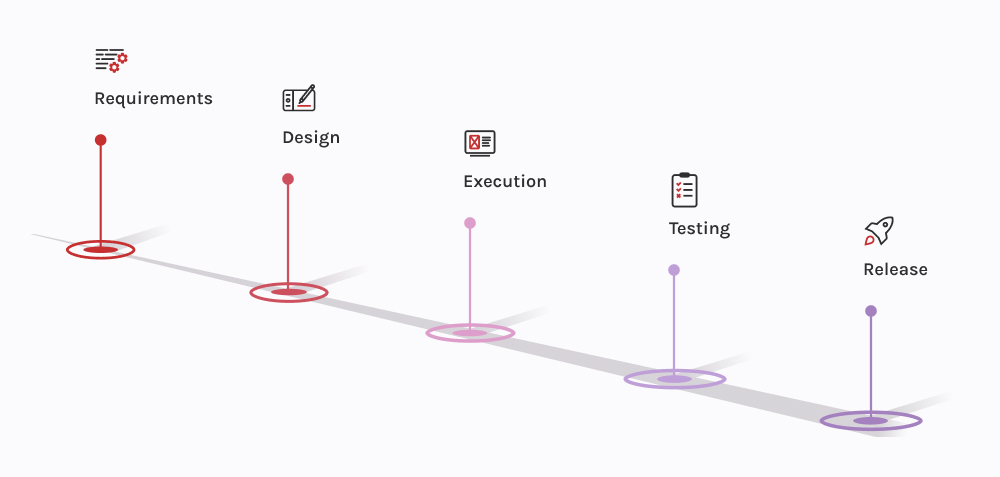
Het Agile model verdeelt het project in kleine, beheersbare delen die sprints worden genoemd en die meestal 2-4 weken duren. Tijdens elke sprint ontwikkelen, testen en verzamelen teams feedback om verbeteringen aan te brengen. Agile benadrukt samenwerking met de klant en flexibiliteit, waardoor veranderingen zelfs laat in de ontwikkeling mogelijk zijn. Populaire Agile raamwerken zijn Scrum en Kanban. Het is ideaal voor projecten waarbij de vereisten vaak veranderen, zoals software met regelmatige updates.
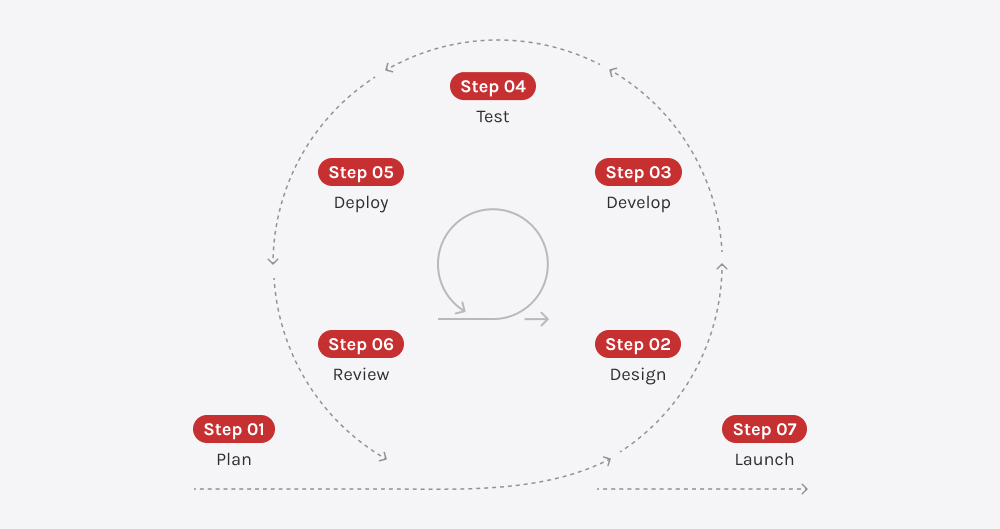
Met het iteratieve model bouw je software stap voor stap. Je begint met een eenvoudige versie van het product en blijft het verbeteren door middel van meerdere rondes. Bij elke iteratie plant, ontwerpt, codeert en test het team nieuwe functies of verfijningen. Het is een goede keuze als de scope van het project nog niet helemaal vastligt aan het begin, omdat je het gaandeweg kunt aanpassen en verbeteren.

Het spiraalmodel combineert iteratieve ontwikkeling met systematische risicobeoordeling. Het bestaat uit vier hoofdfasen: Planning, Risicoanalyse, Engineering en Evaluatie. Elke lus in de spiraal richt zich op één set vereisten, met risicobeoordeling in elke fase. Het model herhaalt het proces, waarbij geleidelijk meer functies worden toegevoegd. Het wordt gebruikt voor grote, complexe of risicovolle projecten, zoals lucht- en ruimtevaart of kritieke softwaresystemen.
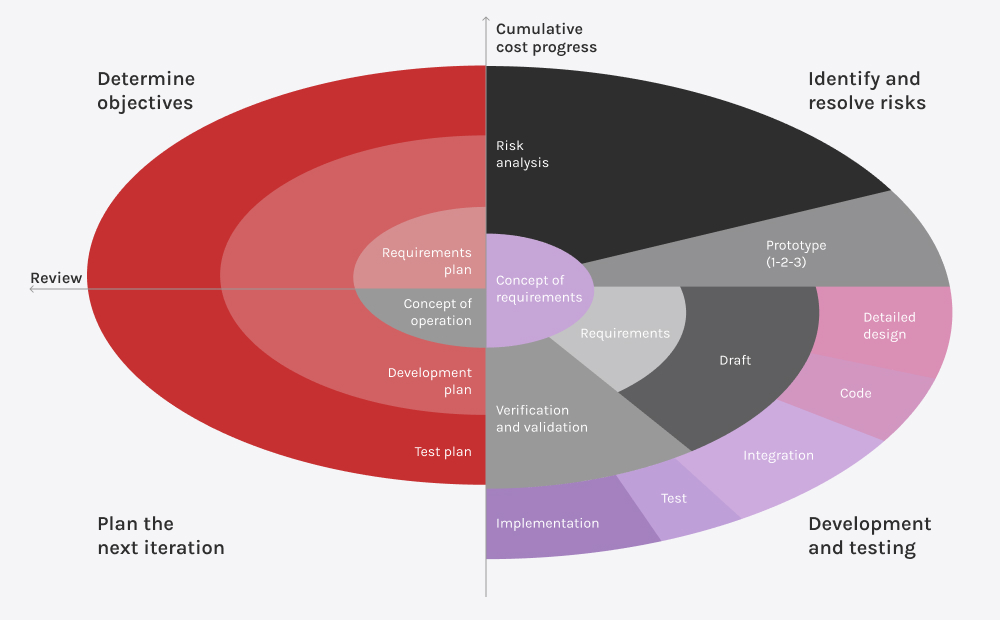
Dit model is vergelijkbaar met Waterval, maar integreert uitgebreid testen in elke fase. Na het voltooien van een ontwikkelingsfase volgt een overeenkomstige testfase. Dit maakt het betrouwbaarder voor projecten waar nauwkeurigheid en validatie cruciaal zijn.
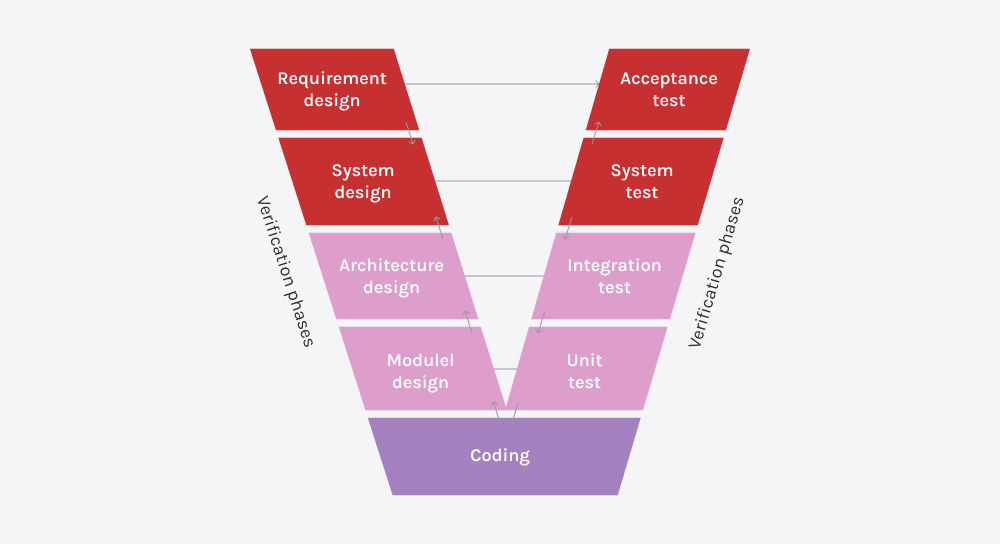
Bij het Big Bang-model begint de ontwikkeling zonder veel planning. Ontwikkelaars maken de software op basis van beperkte eisen en streven vaak naar een snel prototype. Dit model is risicovol en kan leiden tot onvoorspelbare resultaten, maar het is geschikt voor kleine projecten met eenvoudige eisen of experimentele software.
De DevOps model is een aanpak die softwareontwikkeling (Dev) en IT-operaties (Ops) combineert om de samenwerking, snelheid en efficiëntie te verbeteren. Het richt zich op het automatiseren van repetitieve taken zoals testen, integratie, implementatie en monitoring.

Het juiste SDLC-model kiezen kan de toon zetten voor uw hele project. Het is geen one-size-fits-all deal - de beste pasvorm hangt af van zaken als projectomvang, complexiteit, budget, deadlines, hoe ervaren uw team is en hoe betrokken uw belanghebbenden willen zijn.
Laten we eens kijken hoe je verschillende SDLC-methodologieën kunt koppelen aan typische projectkenmerken:
| Factor | Aanbevolen SDLC-modellen |
| Duidelijke vereisten | Waterval, V-model |
| Veranderende vereisten | Agile, Iteratief |
| Kleine projecten | Waterval |
| Grote of complexe projecten | Agile, Spiraal, DevOps |
| Frequente interactie met klanten | Agile, Scrum |
| Minimale interactie met de klant | Waterval, V-model |
| Vast budget & tijdlijn | Waterval, V-model |
| Flexibel budget & tijdlijn | Agile, Spiraal |
| Snelkoppelingen nodig | Agile |
| Langere ontwikkelingstijdlijn | Waterval, V-model |
| Continu onderhoud | Agile, DevOps |
Een SDLC-aanpak (Software Development Life Cycle) kan het verloop van uw softwareprojecten echt veranderen. Hier lees je hoe SDLC helpt om het hele proces veel beter beheersbaar en effectiever te maken:
Bij Innowise hebben we met eigen ogen gezien hoe de software ontwikkelingslevenscyclus (SDLC) aanpak maakt het leven gemakkelijker voor onze teams en onze klanten. Door de best practices van SDLC te volgen, blijven we met alle betrokkenen op één lijn en definiëren we duidelijk de doelen en verwachtingen vanaf het allereerste begin. Dit betekent minder verrassingen, soepelere processen en voorspelbare resultaten in elke fase, van planning en ontwikkeling tot testen en implementatie.
Ontwerp je een upgrade van je eigen aanpak? Bekijk onze services pagina en zie hoe wij u kunnen helpen duidelijkheid en efficiëntie te brengen in uw volgende software project.
Dmitry leidt de technische strategie achter aangepaste oplossingen die echt werken voor klanten - nu en wanneer ze groeien. Hij combineert visie met praktische uitvoering en zorgt ervoor dat elke build slim, schaalbaar en afgestemd op het bedrijf is.
Beoordeel dit artikel:
4.8/5 (45 beoordelingen)












Uw bericht is verzonden.
We verwerken je aanvraag en nemen zo snel mogelijk contact met je op.

Door u aan te melden gaat u akkoord met onze Privacybeleidmet inbegrip van het gebruik van cookies en de overdracht van uw persoonlijke gegevens.